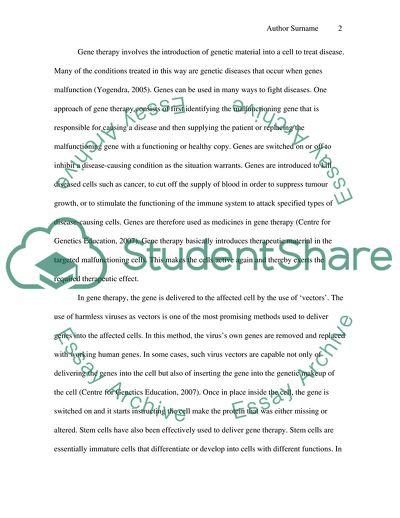Cite this document
(How Have Gene Therapy and Stem Cell Technology Changed the Face of Med Essay, n.d.)
How Have Gene Therapy and Stem Cell Technology Changed the Face of Med Essay. Retrieved from https://studentshare.org/health-sciences-medicine/1719585-topichow-has-gene-therapy-i-stem-cell-technology-has-changed-to-face-of-medicine
How Have Gene Therapy and Stem Cell Technology Changed the Face of Med Essay. Retrieved from https://studentshare.org/health-sciences-medicine/1719585-topichow-has-gene-therapy-i-stem-cell-technology-has-changed-to-face-of-medicine
(How Have Gene Therapy and Stem Cell Technology Changed the Face of Med Essay)
How Have Gene Therapy and Stem Cell Technology Changed the Face of Med Essay. https://studentshare.org/health-sciences-medicine/1719585-topichow-has-gene-therapy-i-stem-cell-technology-has-changed-to-face-of-medicine.
How Have Gene Therapy and Stem Cell Technology Changed the Face of Med Essay. https://studentshare.org/health-sciences-medicine/1719585-topichow-has-gene-therapy-i-stem-cell-technology-has-changed-to-face-of-medicine.
“How Have Gene Therapy and Stem Cell Technology Changed the Face of Med Essay”. https://studentshare.org/health-sciences-medicine/1719585-topichow-has-gene-therapy-i-stem-cell-technology-has-changed-to-face-of-medicine.


